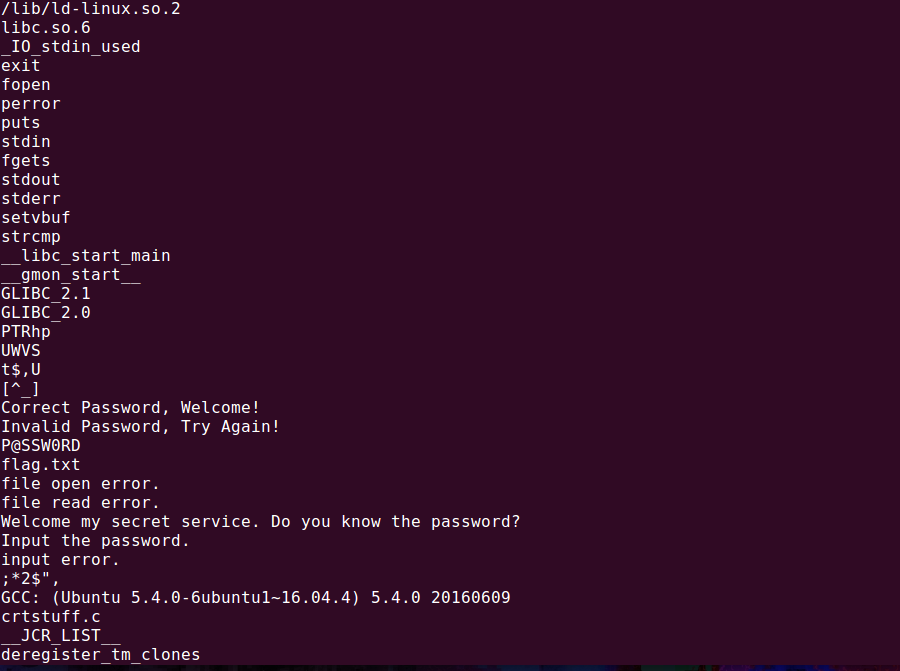Tokyo Westerns CTF 3rd 2017 | Just Do It
by Keramas
CTF:Tokyo Westerns CTF 3rd 2017
Challenge Name:
Just Do It!
Category:
PWN
Useful tools:
GDB, strace, Hopper

Clicking on the challenge we have an address and port to connect to with netcat. They also give the binary to look at as well.

Loading up a terminal and connecting with netcat we are prompted for a password.
So, as a first step, let's run strings on the binary file.

P@SSW0RD looks like it could be promising (or just a troll), but unfortunately this doesn't work.

Time for another test to see what the program is doing! Loading it up with strace we can see two things:
1. The program is reading a file called flag.txt (we will likely need to make use of this...)
2. When inputting a password an automatic linebreak ('\n') is added to the end. Weird...

Diverting from this for a moment, since we are asked for user input might as well try to see if there is the possibility of an overflow. And, what do you know, we get a segmentation fault. Looks like this is just going to be a standard buffer overflow attack.

Running this in GDB and disassembling it, we find that the buffer is quite small and we can overwrite the pointer with an address of our choosing with 20 bytes of nops (or garbage) and then our 4 byte hex address.
Before we write up our exploit, I want to look at one interesting thing: P@SSW0RD was in fact the password, but it is a red herring and even though we get a success message, this is not what we need to do. Since there is a linebreak we need to remove it and that can be done by adding a NULL character after our password and passing it to the program.
python -c "print 'P@SSW0RD' + '\0'" > doitexploit

Okay, back to the actual exploit. What is the address we want to use to jump to? Well, we know that flag.txt is being read by the program, so let's try and zero in on that a bit.

Looking right before fgets, we see an address getting pushed onto the stack.
Examining this we get the following:

This can also be verified with Hopper:

Seems like this is what we want, so let's create our line of code to pass to the program via netcat (remember: use little endian for these addresses!):
python -c "print '\x90' * 20 + '\x80\xa0\x04\x08'" > doitexploit
(Note: I just used garbage A's instead of nops for my actual execution)

Annnnnd boom, there is our flag!
tags: CTF challenge